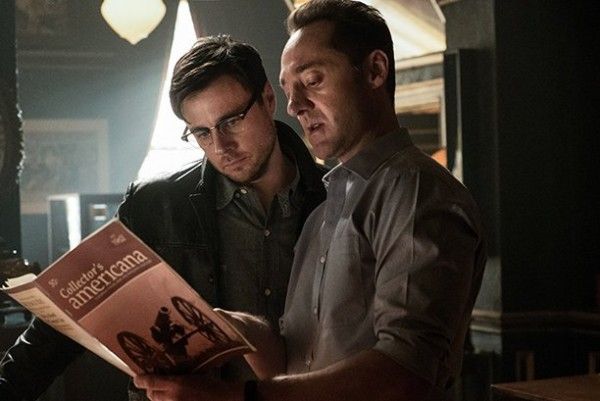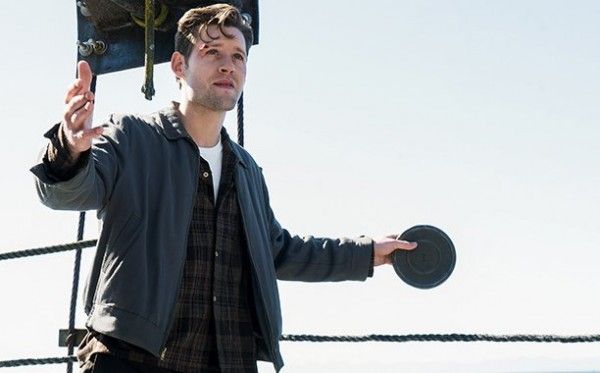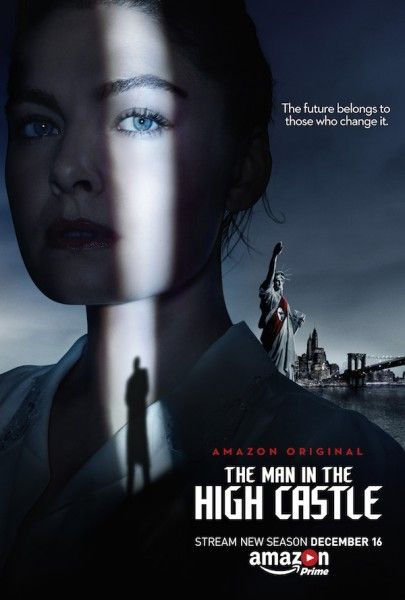If you're looking for an alt-history series to help escape from our current reality, look no further than The Man in the High Castle. The Amazon original series returns for its second season this Friday, just in time to binge all ten episodes over the weekend. And it certainly is a binge-worthy show. In fact, I highly recommend revisiting the first season of the series -- inspired by Philip K. Dick's Hugo Award-winning novel of the same name -- because there is a lot going on here. Season 2 adds another wrinkle to an already complex interweaving of multiple narratives, so it might be a tough task for new viewers to jump in without context. But if you take the plunge, you'll be rewarded with a viewing experience unlike anything else on TV at the moment.
The first season of The Man in the High Castle started off with an enticing hook that forms the foundation of the show itself. The story is set in 1962 in an alternate history in which the Axis powers won World War II and divided up the United States into three zones: the Japanese Pacific States, occupying all territories west of the Rocky Mountains; the Greater Nazi Reich, comprised of the eastern two-thirds of the former U.S.; and a neutral zone that exists as a buffer region between the two. That setup alone provides a rich source of narrative material and an instant hook that helps to separate The Man in the High Castle from the myriad of other Peak TV shows right now. But it's the strength of the characters and the highly competent and engaging actors' performances that keep audiences coming back.
The second season (as of the first five episodes available for review) follows the continuing and increasingly perilous interactions of Juliana Crain (Alexa Davalos), Frank Frink (Rupert Evans), Joe Blake (Luke Kleintank), John Smith (Rufus Sewell) and Nobusuke Tagomi (Cary-Hiroyuki Tagawa) as they each pursue their own personal quest for truth and justice. It's nearly impossible to pick a favorite here. Each of the characters have their own personal demons that complicate the achievement of their individual goals: Juliana's search for answers regarding the controversial film "The Grasshopper Lies Heavy" leads her to an ill-fated meeting with the title character and leaves her in more danger than ever; Frank's quest for justice begins to take a turn towards vengeance as he schemes to free Ed (DJ Qualls) from certain death; Joe's narrow escape in Season 1 puts him on a rather revealing journey of self-discovery; John is faced with an impossible decision as he's caught between family and Führer; and Tagomi moves beyond his earlier schemes to embrace and explore his newfound ability to travel between alternate realities.
That last sci-fi element of the show -- the existence of alternate worlds -- was only teased in Season 1, at best only suggesting that the worlds glimpsed in Tagomi's visions and the mysterious film reels could be actual realities. This idea is strongly embraced in Season 2. From the get-go, we're told that these films (yes, films plural) are evidence of events in alternate realities, and both the title character and Hitler himself are obsessed with deciphering their secrets. Hitler's motives are clear; he's looking for knowledge that will help to strengthen his empire and eliminate threats to it, like assassination attempts, his own life-shortening battle with Parkinson's, and the nuclear cold war with the Japanese empire. The Man in the High Castle's intentions are left ambiguous so that both audiences and Juliana are forced to puzzle them out. But that plot point ends up being less interesting that Tagomi's discoveries through his own apparently corporeal trans-dimensional trips.
One way to compose a solid sci-fi story is to use 95% believable situations and relatable characters with 5% of the fantastic thrown in to heighten what would otherwise be a straightforward drama. The Man in the High Castle's more mundane base is a strength. The show portrays what everyday life would be like under the thumb of Japanese imperialism or Nazi reign; people work for a living, try to keep their heads down, and think first about providing for their families before considering open rebellion. It's the normalization of the abnormal, as far as we're concerned in our own historical timeline, a realistic depiction of an alternate history.
And yet this sci-fi element of glimpsing alternate worlds does much more than provide a cool twist to the narrative. It opens the bridge between opposing minds, even if it's not actively opening the bridge between the worlds themselves. Juliana discovers a link to her past through a film reel that reveals an important player in historical events across worlds, and Tagomi's experiences in a seemingly idyllic utopian society (one that exists along with an undercurrent of tension due to the Cuban Missile Crisis) serve to expand his mind and shift his perspective. More than simply a way to include cultural touchstones like Vladimir Nabokov's 1955 book "Lolita" (and Stanley Kubrick's 1962 film by the same name) or William James' tome "The Varieties of Religious Experience: A Study in Human Nature", this otherworldly interaction suggests that certain events related to war, oppression, and the threat of annihilation are destined to occur in each and every timeline ... it's only through the tenuous connections among people of differing backgrounds who come together to fight for a common good that we are able to overcome such threats. Will the citizens of the alt-world of The Man in the High Castle unite in the hopes of a better tomorrow, or will their efforts be in vain when faced with possible nuclear destruction?
Rating: ★★★★ Very good — Damn fine television.
The Man in the High Castle returns to Amazon Friday, December 16th for its 10-episode second season.




